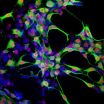(Press-News.org) Using sophisticated methods of dating rocks, a team including University of Southampton researchers based at the National Oceanography Centre, Southampton, have pinned down the timing of the start of an episode of an ancient global warming known as the Paleocene-Eocene thermal maximum (PETM), with implications for the triggering mechanism.
The early part of the Cenozoic era, which started around 65.5 million years ago witnessed a series of transient global warming events called hyperthermals. The most severe of these was the PETM at the Paleocene–Eocene boundary, around 56 million years ago. Over a period of around 20,000 years, a mere blink of the eye in geological terms, ocean temperatures rose globally by approximately 5°C. There is evidence that the concentration of atmospheric carbon oxide increased, but the phenomena that triggered the event remain controversial.
One possibility is that these hyperthermals were driven by cyclic variations in the eccentricity of the Earth's orbit around the sun. At the cycle peaks, increased temperatures could have caused methane hydrate deposits in the deep sea to release large amounts of methane. Some of this potent greenhouse gas would have entered the atmosphere resulting in further intensification of the climatic warming, which would have continued as the methane was fairly rapidly converted into carbon dioxide in the atmosphere.
Alternatively, it may have been geological processes, unrelated to variation in the Earth's orbit, which could have been the culprit for the warming associated with the PETM. In this scenario, magmatism would have caused the baking of marine organic sediments, leading to the massive release of methane and/or carbon dioxide, possibly through hydrothermal vents, thus initiating the global warming which led to the methane release.
"Determining exactly what triggered the PETM requires very accurate dating of the event itself, to determine whether it occurred during a known maximum in the Earth's orbital eccentricity" explains Adam Charles, a University of Southampton PhD student supervised by Dr Ian Harding, and first author of the newly published report.
To getter a better grip on the numerical age of the Paleocene–Eocene boundary, the researchers measured radio-isotopes of uranium and lead in the mineral zircon, found as crystals in two volcanic ash horizons deposited during the PETM. These rocks were collected from two locations in Spitsbergen, the largest island of the Svalbard Archipelago in the Arctic.
Based on their data, the researchers dated the Paleocene–Eocene boundary at between 55.728 and 55.964 million years ago, which they believe to be the most accurate estimate to date. Their analyses indicated that the onset of the PETM, unlike those of other Eocene hyperthermals, did not occur at the peak of a 400 thousand year cycle in the Earth's orbital eccentricity. Instead, it occurred on the falling limb of a cycle when warming by the sun would not have been at a maximum.
"Compared to other early Eocene hyperthermals, it appears that the PETM was triggered by a different mechanism, and thus may have involved volcanism. However, a thorough test of this hypothesis will require further detailed dating studies," Adam concluded.
INFORMATION:
The researchers are Adam Charles, Ian Harding, Heiko Pälike and John Marshall (Ocean and Earth Science, University of Southampton), Daniel Condon (British Geological Survey), and Ying Cui and Lee Kump (Pennsylvania State University).
The research was supported by the Natural Environment Research Council (NERC) and Shell UK, as well as a Philip Leverhulme Prize to Heiko Pälike.
Charles, A. J., Condon, D. J., Harding, I. C., Pälike, H., Marshall, J. E. A., Cui, Y. & Kump, L. Constraints on the numerical age of the Paleocene–Eocene boundary. Geochemistry Geophysics Geosystems 12, Q0AA17, doi:10.1029/2010GC003426
Dating an ancient episode of severe global warming
2011-06-16
ELSE PRESS RELEASES FROM THIS DATE:
Researchers report progress using iPS cells to reverse blindness
2011-06-16
INDIANAPOLIS – Researchers have used cutting-edge stem cell technology to correct a genetic defect present in a rare blinding disorder, another step on a promising path that may one day lead to therapies to reverse blindness caused by common retinal diseases such as macular degeneration and retinitis pigmentosa which affect millions of individuals.
In a study appearing in an advance online publication of the journal Stem Cells on June 15, 2011, investigators used recently developed technology to generate induced pluripotent stem (iPS) cells from a human patient with an ...
Animal instincts: Why do unhappy consumers prefer tactile sensations?
2011-06-16
A new study in the Journal of Consumer Research explains why sad people are more likely to want to hug a teddy bear than seek out a visual experience such as looking at art. Hint: It has to do with our mammalian instincts.
"Human affective systems evolved from mammalian affective systems, and when mammals are young and incapable of thinking, their brain systems have to make these pups able to perform the 'correct' behavior," write authors Dan King (NUS Business School, Singapore) and Chris Janiszewski (University of Florida, Gainesville). One way the brain encourages ...
Facebook friends? Group identity helps consumers remember ads
2011-06-16
When consumers think about the groups they belong to, they recall ads better, according to a new study in the Journal of Consumer Research.
"A key determinant of how much consumers remember from an ad is the connection between the ad content and the consumer's own self-concept," write authors Kathryn R. Mercurio (UCLA) and Mark Forehand (University of Washington, Seattle).
Consumers identify with many different demographic groups, such as race, gender, or age. They also identify with family role groups (mother, father, sister), or occupational groups such as lawyer, ...
How does identification with an organization enhance values?
2011-06-16
Strongly identifying with an organization or workplace can change people's lives in profound ways, according to a new study in the Journal of Consumer Research.
"Managers often hope that consumers identify with organizations they regularly patronize, and firms sometimes encourage labor to encourage employees to identify with firms they work for, because in both cases organizations benefit from such identification," write authors Melea Press and Eric J. Arnould (both University of Wyoming, Laramie). The authors focus on identification formation from the perspective of ...
Magical thinking helps dieters cope with unrealistic expectations
2011-06-16
Magical thinking, usually dismissed as naïve and irrational, can actually help consumers cope with stressful situations like trying to lose weight, according to a new study in the Journal of Consumer Research.
"Magical thinking occurs when an individual invokes mystical, supernatural forces to understand, predict, or even influence events to overcome these stressful situations," write authors Yannik St. James (HEC Montreal), Jay M. Handelman, and Shirley F. Taylor (both Queen's University, Kingston, Canada).
"Weight loss activities are stressful for a number of reasons: ...
Sexy doesn't always sell: When do beautiful models help?
2011-06-16
Having an attractive model shill for a product only helps influence sales in certain situations, according to a new study in the Journal of Consumer Research. It seems it all depends on the set-up for the advertising.
"Sometimes attractive endorsers increase persuasion, sometimes they decrease persuasion, and sometimes they have no effect at all," write authors Janne van Doorn and Diederik A. Stapel (both Tilburg University, the Netherlands). In four experiments, the authors demonstrated that context is everything when it comes to evaluating the role of the attractive ...
AGU journal highlights -- June 15, 2011
2011-06-16
The following highlights summarize research papers that have been recently published in Water Resources Research (WRR), Geophysical Research Letters (GRL), Journal of Geophysical Research-Atmospheres (JGR-D), Paleoceanography (PA), and the Journal of Geophysical Research-Oceans (JGR-C).
In this release:
How yearly cholera outbreaks propagate in the Bengal Delta
Surge in North Atlantic hurricanes due to better detectors, not climate change
Potential for Atlantic current collapse hinted by complex global circulation model
Formation of Indonesian Archipelago destroyed ...
When imitation doesn't flatter: When do consumers care about mimicry?
2011-06-16
Consumers react strongly to their product choices being copied, according to a new study in the Journal of Consumer Research. They really dislike it when the copycat is someone similar to them.
"Have you ever gone to a party only to learn upon arrival that another guest is wearing the same dress or shirt as you?" ask authors Katherine White (University of British Columbia) and Jennifer J. Argo (University of Alberta). The researchers looked at what happens when someone else copies a consumer's product choice.
Although past research suggests that people are often motivated ...
Teens look to parents more than friends for sexual role models
2011-06-16
MONTREAL, June 15, 2011 – The results of a national online study show that 45% consider their parents to be their sexuality role model. Shattering stereotypes that parents and society hold about teen sexuality, the survey also revealed that only 32% looked to their friends and just 15% took inspiration from celebrities. Dr. Jean-Yves Frappier, a researcher at the University of Montreal's affiliated CHU Sainte-Justine Hospital Research Centre will be presenting the results at the Canadian Paediatric Society's 88th Annual Conference on June 18, 2011.
Importantly, the survey ...
Sudden cardiac death subject of sweeping UCSF study in San Francisco
2011-06-16
A new study by the University of California, San Francisco's Cardiac Electrophysiology Service seeks to discover for the first time the true causes of sudden cardiac death (SCD), why it is more prevalent in some demographic populations, and whether it is too often inaccurately cited as a cause of death.
Working with the Office of the Chief Medical Examiner for the City and County of San Francisco, researchers will fully investigate every death attributed to a sudden cardiac event in San Francisco over a three-year period. They hope to learn the biological risk factors ...


